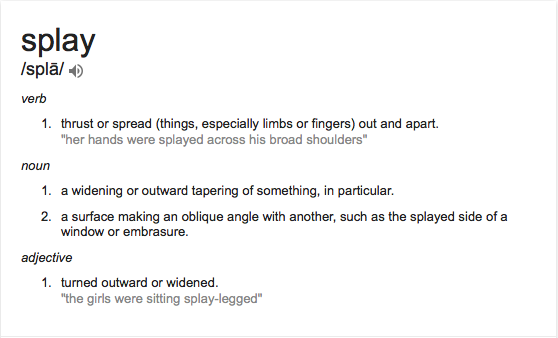How you splay your speakers in relationship to each other is the difference between good sound and bad sound. Especially when you’re forming an array of speakers that are located right next to each other.
In order to splay and aim your speakers correctly for a given purpose, you need to know their dispersion characteristics. Ideally you can model how they react with each other prior to even purchasing them so you know what you are getting for your money. If you’re using existing cabinets for a temporary job, splaying your speakers right is mandatory. Otherwise you might be better of leaving 1/2 of them at the shop.
In order to understand why I have to explain comb filtering and how it is created.
QUOTE:
“In acoustics, comb filtering can arise in some unwanted ways. For instance, when two loudspeakers are playing the same signal at different distances from the listener, there is a comb filtering effect on the signal. In any enclosed space, listeners hear a mixture of direct sound and reflected sound. Because the reflected sound takes a longer path, it constitutes a delayed version of the direct sound and a comb filter is created where the two combine at the listener”
Any time you combine two signals (electrically or acoustically) that are the same but out of time with each other, you’re going to get comb filtering. Sometimes this is useful. For example guitarist use pedals that vary the time between two identical signals to create flange and phase and chorus. None of those “effects” are desirable in audio unless they are added on purpose. Having your speakers overlap too much isn’t going to make your PA sound good and it’s not going to make the guitarist happy.
I see people array similar speakers all the time with seemingly no thought of how they interact. People might consider coverage when they aim speakers but many don’t also consider the consequences of overlapping coverage. Done right, you get a seamless transition from one to the next. Done wrong, and you would of been better off using less speakers.
Which sounds better? Bad sound louder or good sound softer? In the year 2014, I will suggest that good sound is good sound and bad sound is bad sound and bad sound should be avoided on purpose. We all go to so much trouble and expense to try to get everything else right. To then botch the setup by incorrectly splaying our cabinets or mis-aiming them is simply a tragedy.
My current focus is on gaining the information and then sharing the information of “how to aim and splay your speakers correctly”. This topic seems so relevant since it’s something that can be measured and optimized with a measurement rig, I’ve decide to give the topic it’s own page.

